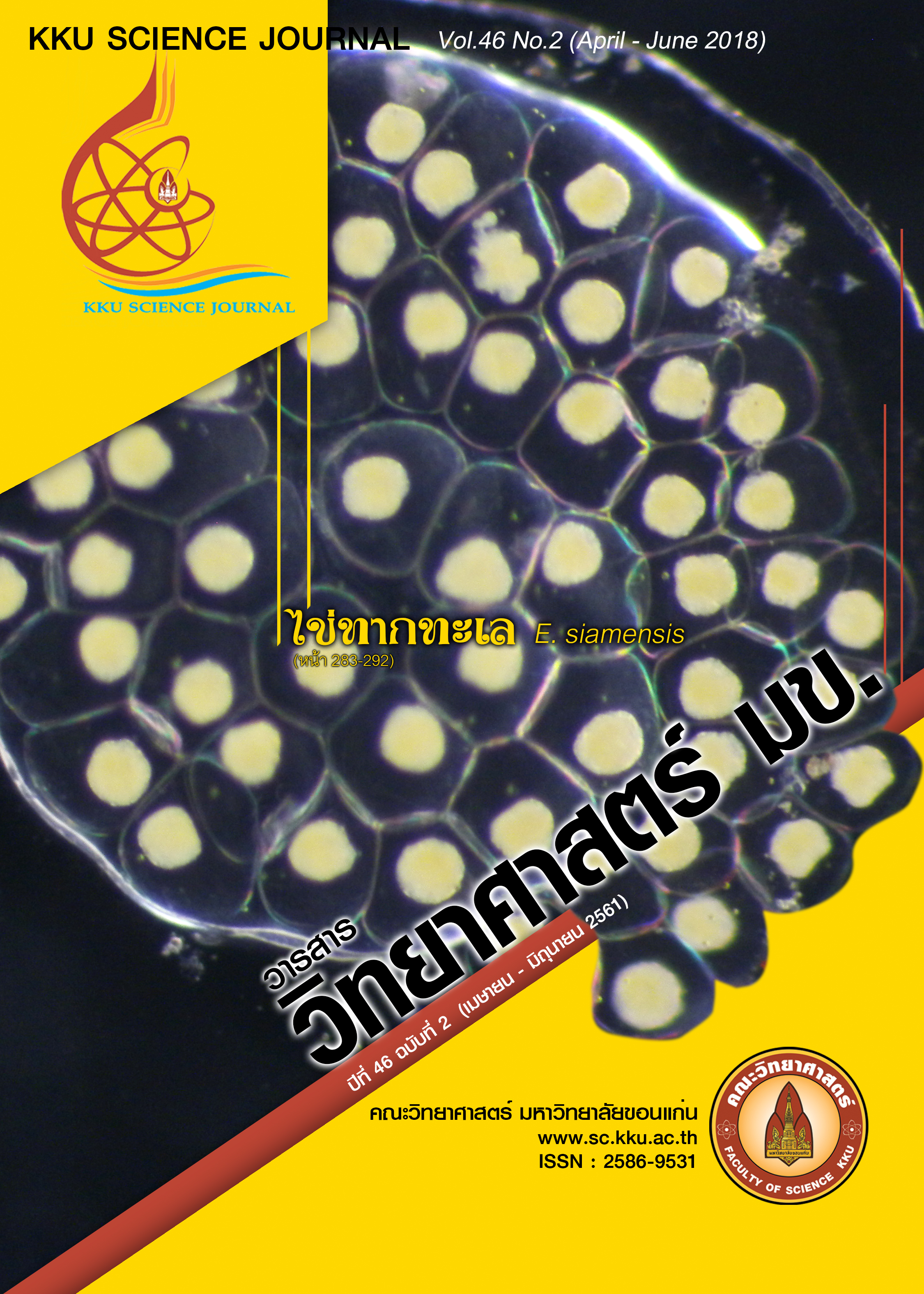Phytochemical Screening and Antioxidant Activities of Local Herbal Plants in the North of Thailand for Development to Ready-To-Drink Herbal Tea
Main Article Content
Abstract
The aim of this research was to study phytochemical screening and antioxidant activities of 10 local herbal plants in the North of Thailand, including Croton persimilis, Croton stellatopilosus, Baliospermum solanifolium, Colocasia gigantea, Bambusa nutans, Boehmeria nivea, Cassia fistula, Musa X paradisiaca, Imperata cylindrica and Leersia hexandra for development to ready-to-drink herbal tea. All plants were extracted by distilled water. After that, a preliminary phytochemical screening such as flavonoids, tannins, terpenoids, and saponins was performed using standard protocols. Polyphenol content using Folin Ciocalteau assay and antioxidant acitivities using 2, 2-diphenyl-1-picrylhydrazyl (DPPH) radical scavenging activity and Thiobarbutiric acid reactive substances (TBARS) were evaluated. As a result, major bioactive compounds in the plant extracts was terpenoids with trace amount of saponin. Plant extracts at 2000 µg/ml concentration were used for polyphenol content and antioxidant activities. The result found that, Croton persimilis extract showed the highest polyphenol content (747.08 µgGAE/ml) leading to the highest for inhibition lipid peroxidation in thiobarbituric acid reactive substances (TBARS) was 58.25% while C. persimilis, C. stellatopilosus, B. solanifolium, I. cylindrical, and B. nutans showed the highest DPPH radical scavenging activity (p >0.05) were 75.95, 78.42, 80.29, 79.94 and 76.91 % respectively. Afterward, 10 herbs were prepared of 4 formulations for analysis of sensory characteristics by using hedonic 9 points scale. It was found that, formulation 2 and 4 were not significantly different (p >0.05). When considering the antioxidant activities, formulation 2 was higher than another formula. Therefore, formulation 2 was selected to find optimum condition for polyphenol extraction from tea by using response surface methodology (RSM). The result shown that optimum condition was 100oC for 20 min. Because this condition gave the highest polyphenol content was 130.88 µgGAE/ml.
Article Details

This work is licensed under a Creative Commons Attribution-NonCommercial-NoDerivatives 4.0 International License.


